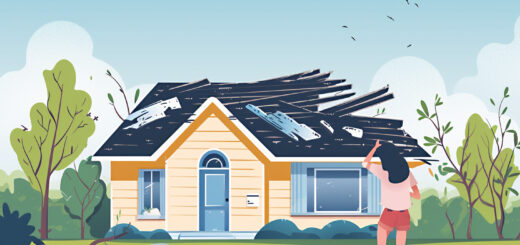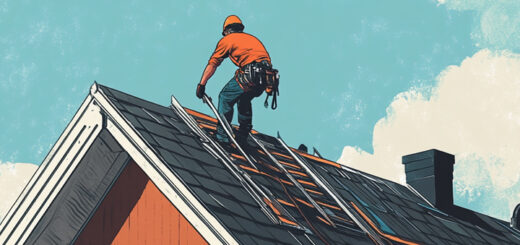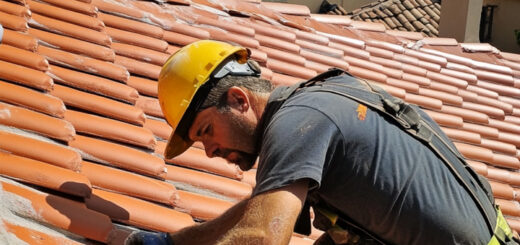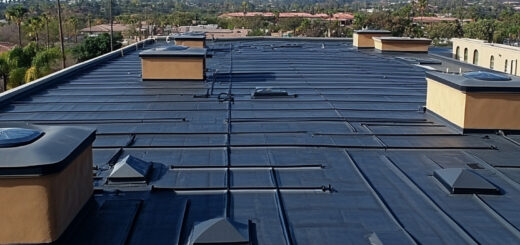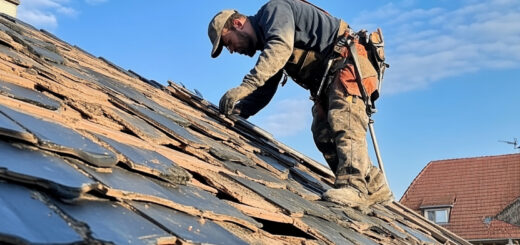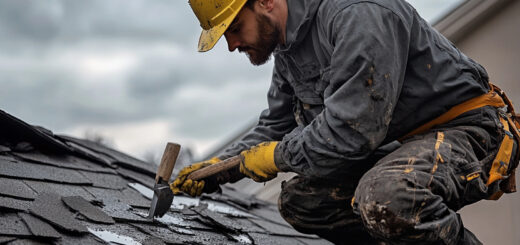DIY Roof Repairs: When to Call a Professional for Optimal Safety and Efficiency
When it comes to maintaining your home, understanding the scope of DIY roof repairs can be incredibly beneficial. While some roofing issues require professional intervention, there are several simple roof fixes that homeowners can tackle themselves. By addressing minor roofing issues promptly, you can prevent them from escalating into more significant problems.
One of the essential diy roof repair tips is to regularly inspect your roof for signs of wear and tear. Look for cracked or missing shingles, as these are often straightforward to replace with a few basic tools and materials. Another common issue is clogged gutters, which can lead to water damage if left unaddressed. Clearing debris from gutters is a simple task that can greatly enhance your roof’s longevity.
Basic roof maintenance also involves checking for leaks and ensuring that flashing around chimneys and vents is secure. These minor repairs typically require only a sealant or replacement of damaged sections, making them manageable for most homeowners with a bit of patience and care.
By familiarizing yourself with these diy techniques, you not only save money but also extend the life of your roof through proactive maintenance. However, always prioritize safety by using appropriate equipment and seeking professional help when necessary for more complicated repairs.
Common Roof Problems You Can Fix Yourself
Maintaining your roof is essential for the longevity of your home, and while some issues may require professional intervention, there are several common roof problems you can tackle yourself. Understanding these DIY solutions can save you time and money.
One frequent issue homeowners encounter is damaged or missing shingles. Shingle replacement DIY projects are quite manageable with the right tools and safety precautions. Begin by carefully removing the damaged shingle and any protruding nails, then slide a new shingle into place, securing it with roofing nails.
Another area that often requires attention is the gutters. Regular gutter cleaning is crucial to prevent water damage to your home’s foundation. Simple gutter cleaning tips include using a sturdy ladder to access gutters safely, wearing gloves to protect your hands from sharp debris, and using a garden hose to flush out any remaining dirt after removing larger obstructions by hand.
Small leaks in the roof can also be patched without professional help if addressed promptly. For patching small leaks, identify the source of the leak from inside your attic during a rainstorm or by spraying water on suspected areas while someone observes from below. Once located, use roofing cement or a suitable sealant to cover small holes or cracks.
Lastly, flashing repairs are another common DIY project that can prevent significant water damage when done correctly. Flashing around chimneys or vents often deteriorates over time but can be fixed by resealing joints with roofing cement or replacing damaged sections entirely.
By understanding these common issues and how to address them yourself, you not only extend the life of your roof but also gain valuable skills in home maintenance.
The Risks and Limitations of DIY Roof Repairs
When considering DIY roof repairs, it’s crucial to be aware of the potential risks and limitations involved. While taking on a roofing project yourself might seem cost-effective, the dangers associated with DIY roofing can outweigh the savings. One of the primary concerns is safety; without proper training and equipment, working at heights can lead to severe injuries or even fatalities. Implementing safety precautions for roof work, such as using harnesses and ensuring stable ladders, is essential but often not enough to mitigate all risks.
Moreover, understanding when DIY isn’t enough is vital in maintaining your roof’s integrity. Complex roofing problems require professional expertise to ensure that issues are resolved correctly and efficiently. Inadequate repairs can lead to more significant damage over time, potentially resulting in higher costs than hiring a professional from the outset. Therefore, it’s important for homeowners to assess their capabilities honestly and recognize when it’s best to call in experienced roofers who have the skills and tools necessary for safe and effective repairs.
Signs It’s Time to Call a Professional Roofer
When it comes to maintaining your home, the roof is one of the most crucial components to keep in top condition. However, identifying when it’s time to call in professional roofing services can be challenging. Here are some clear signs that indicate you may need expert assistance.
One of the most obvious severe roof damage signs is visible sagging or drooping areas on your roof. This can indicate structural integrity concerns that need immediate attention to prevent further deterioration or potential collapse. Additionally, if you notice extensive water damage inside your home—such as persistent leaks, water stains on ceilings or walls, or mold growth—it’s a strong indication that your roof may have compromised areas allowing moisture intrusion.
Other warning signals include missing or damaged shingles, which can expose underlying materials and lead to more significant issues if not addressed promptly. If you observe granules from shingles accumulating in gutters or downspouts, this might suggest that your roofing material is nearing the end of its lifespan and requires professional evaluation.
In any of these scenarios, delaying repairs can exacerbate problems and increase repair costs significantly. Engaging with a professional roofer ensures a thorough inspection and effective solutions tailored to restore the safety and functionality of your roof efficiently.
The Benefits of Hiring a Professional Roofing Contractor
When it comes to roofing, many homeowners grapple with the decision of whether to tackle the project themselves or hire a professional contractor. While DIY projects can seem cost-effective at first glance, there are compelling reasons to consider hiring a professional roofing contractor.
One of the primary benefits is the difference in costs when comparing professional versus DIY roofing. Although DIY might appear cheaper initially, it often leads to hidden expenses due to mistakes or lack of expertise. Professional contractors bring experience and specialized tools that ensure efficient and correct installation, ultimately saving money by avoiding costly repairs down the line.
Expert inspection services are another advantage that professionals offer. Certified roofers can identify underlying issues that an untrained eye might miss. This proactive approach prevents minor problems from escalating into major ones, safeguarding your home and reducing future repair costs.
Additionally, hiring a professional often comes with warranty advantages. Most reputable contractors offer warranties on their workmanship and materials used, providing peace of mind and financial protection against potential defects or failures.
Finally, professionals provide long-term solutions for roofs by using high-quality materials suited for your specific climate and building structure. Their expertise ensures that your roof not only looks great but also performs optimally over its lifespan.
In conclusion, while tackling a roofing project yourself may be tempting for immediate savings, the long-term benefits of hiring a professional contractor—including expert inspections, warranty protections, and durable solutions—make it a wise investment for your home’s future stability and value.
How to Choose the Right Roofing Professional for Your Needs
Choosing the right roofing professional is crucial to ensuring your home is protected and your investment is worthwhile. When searching for reliable roofers near you, it’s essential to start by doing thorough research. Begin by compiling a list of potential contractors in your area. Online searches can be helpful, but personal recommendations from friends or family who have had positive experiences are invaluable.
Once you have a list, the next step is to evaluate each contractor’s credentials and reviews. Check if they are licensed and insured, as this not only ensures their legitimacy but also protects you from liability in case of any accidents during the project. Online reviews on platforms like Google or Yelp can provide insights into previous customers’ experiences and satisfaction levels.
Before making a decision, prepare a set of questions to ask potential contractors. Inquire about their experience with projects similar to yours, their estimated timeline for completion, and whether they offer warranties on their work. It’s also wise to ask for references so you can speak directly with past clients about their experiences.
By taking these steps—finding reliable roofers near you, checking credentials and reviews, and asking the right questions—you’ll be well-equipped to choose a roofing professional who meets your needs effectively.
Balancing DIY Efforts with Professional Expertise in Roof Maintenance and Repair
In the realm of roof maintenance and repair, finding the right balance between do-it-yourself efforts and professional expertise is crucial for ensuring the longevity and functionality of your roofing system. While DIY projects can be a cost-effective way to handle minor repairs or routine maintenance tasks, it’s important to recognize their limitations. Simple tasks like cleaning gutters or replacing a few shingles can often be managed by homeowners with some basic skills and tools. However, more complex issues such as significant leaks, structural damage, or comprehensive roof replacements typically require the knowledge and experience of professional roofing contractors.
Professional roofers bring a wealth of expertise to the table, including access to specialized tools and materials that may not be readily available to the average homeowner. They are trained to identify underlying problems that might not be immediately apparent during a casual inspection. Moreover, hiring professionals ensures that repairs comply with local building codes and safety regulations, reducing potential risks associated with improper repairs.
Ultimately, maintaining an optimal balance involves recognizing when it’s appropriate to tackle projects on your own and when it’s time to call in the experts. By combining regular DIY maintenance with periodic professional inspections and repairs, homeowners can extend the life of their roofs while safeguarding their investment in one of their most valuable assets—their home.


